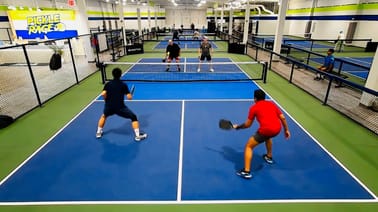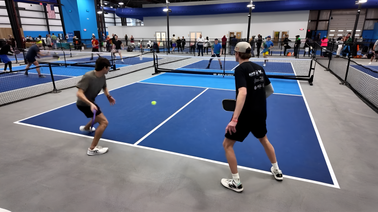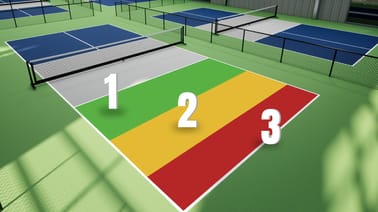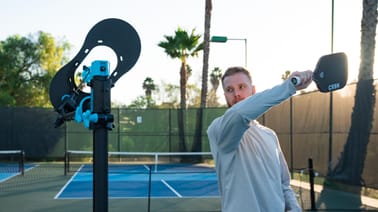
Knowing who controls the point dictates how you should prepare for your next shot. A transition from defense to offense can happen in a split second.
Below are the examples he gives to identify if you’re on offense, defense, or in a neutral state.
Defense
Court position - Your opponents are closer to the kitchen line
Off balance - A lunge, stretch, or reach for the ball that puts you off balance
Contact point - Contact behind your body or getting jammed are two examples
Half volley - It's ill-advised to attack a low ball, you're likely playing defense on a half volley
High ball - When you give your opponent a high ball to hit out of the air
Dead dink - When you hit a high bouncing dink, your opponent can attack
Offense
The opposite of scenarios 1-6. The returning team usually starts on 'offense' because they get to the kitchen line first.
Neutral
All four players have reached the kitchen line and none of the above scenarios are in play. It is typically seen after a successful third or fifth shot drop.
Clearly defining when you’re on offense vs defense will help you predict what happens next on the court. It tells you where to stand, how tight to grip your paddle, and where to look for the next ball.
What to do next
Now, let's go over how to react in these scenarios.
Defense
Create space - Back up, move away from the kitchen line to give yourself more time to react to the next shot.
Make it bounce - Land the ball in the kitchen to give yourself time to recover and improve court position before their next shot.
Flip the point - Get back to neutral or offense instead of trying to hit high risks winners.
Offense
Keep the advantage - Push the odds further in your favor. Keep them back in the court. Hit the ball at their feet to force a mistake, or into the open court for a winner.
Close the gap - Get all the way to the kitchen line, lean in to eliminate more space.
Neutral
Hold your ground - Focus on not surrendering a high ball or dead dink.
Create an advantage - Increase dink complexity to create an advantage. Force an off-balanced shot or a ball at their feet.
OR: Wait them out - Wait for the other team to attack early or make a dink error.
Related: When to Use the 'Middle Dink'
Shot selection doesn’t need to be difficult. Start playing smart pickleball and watch the wins roll in.










